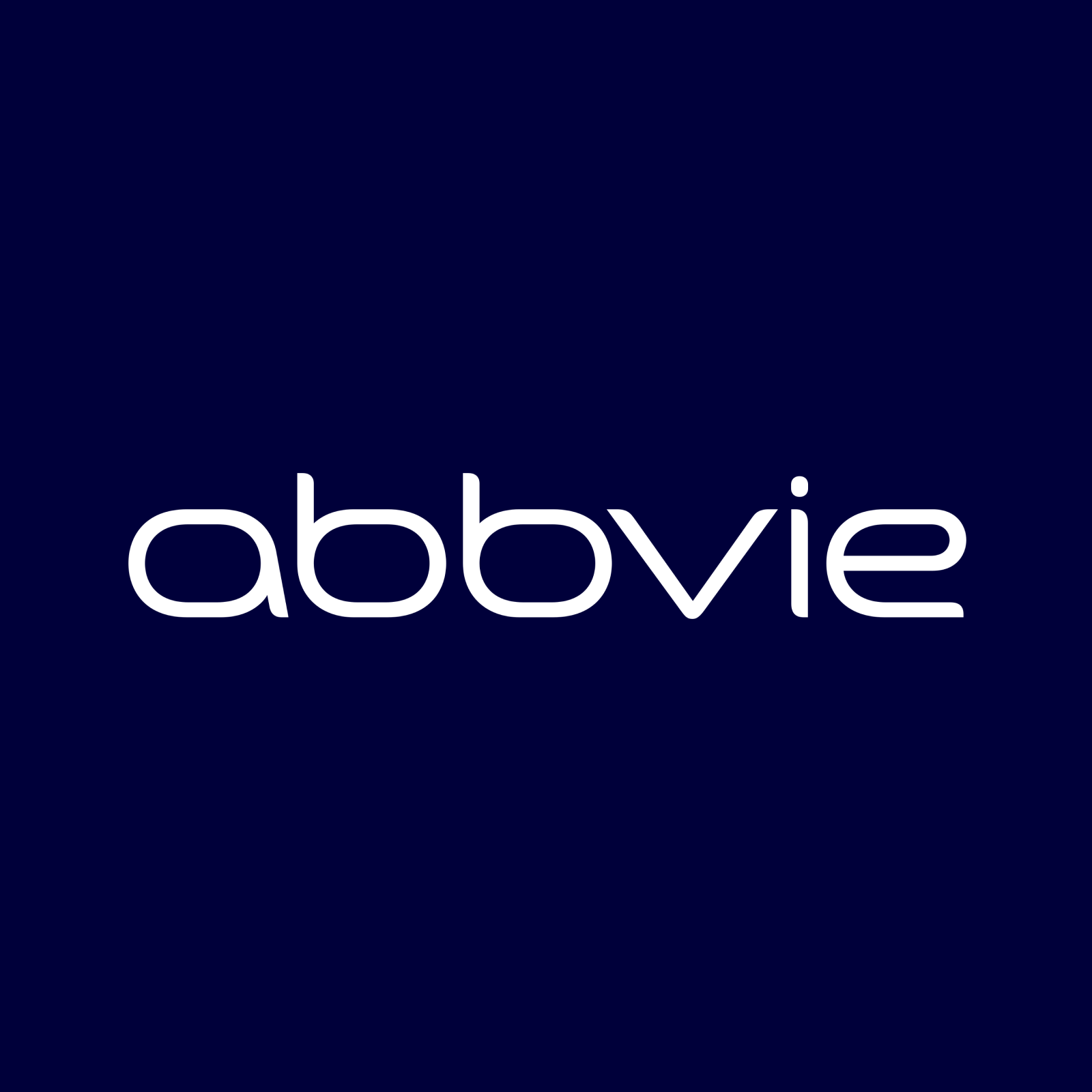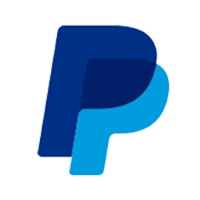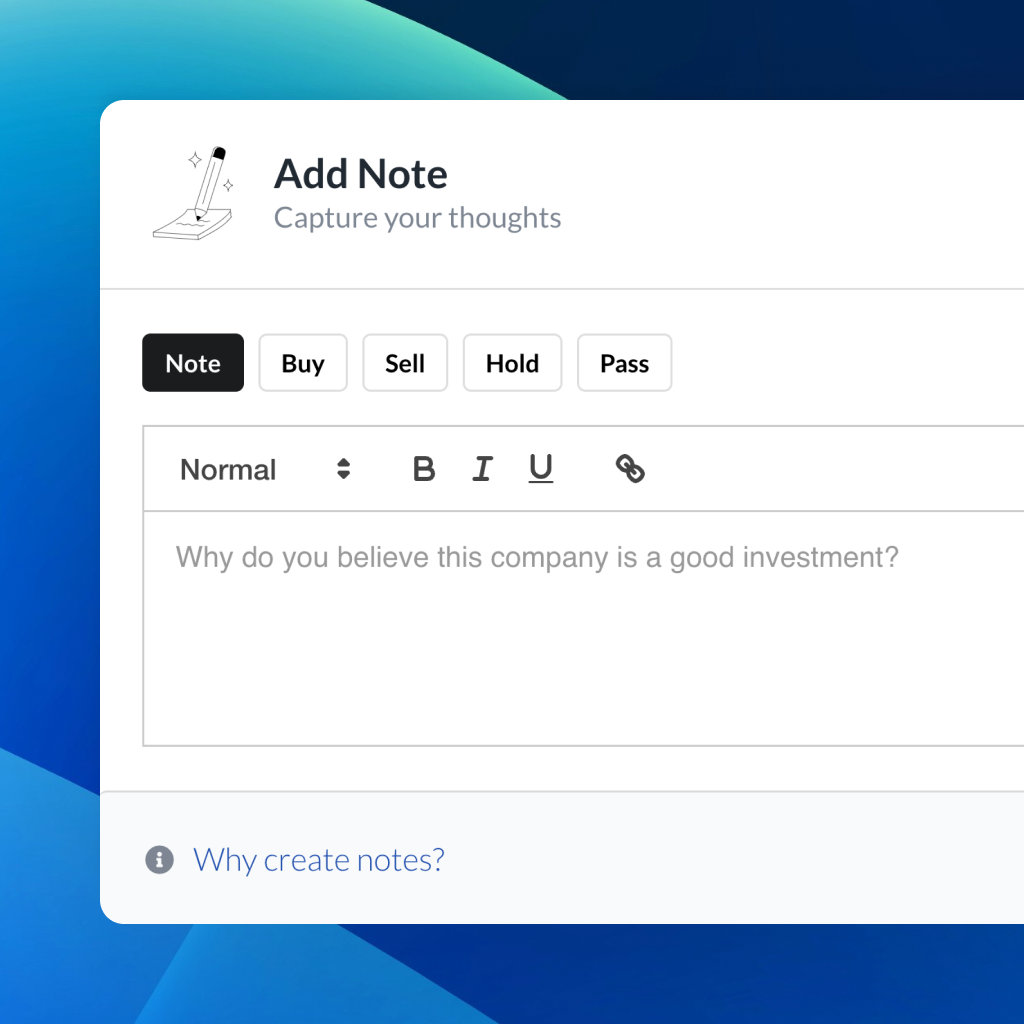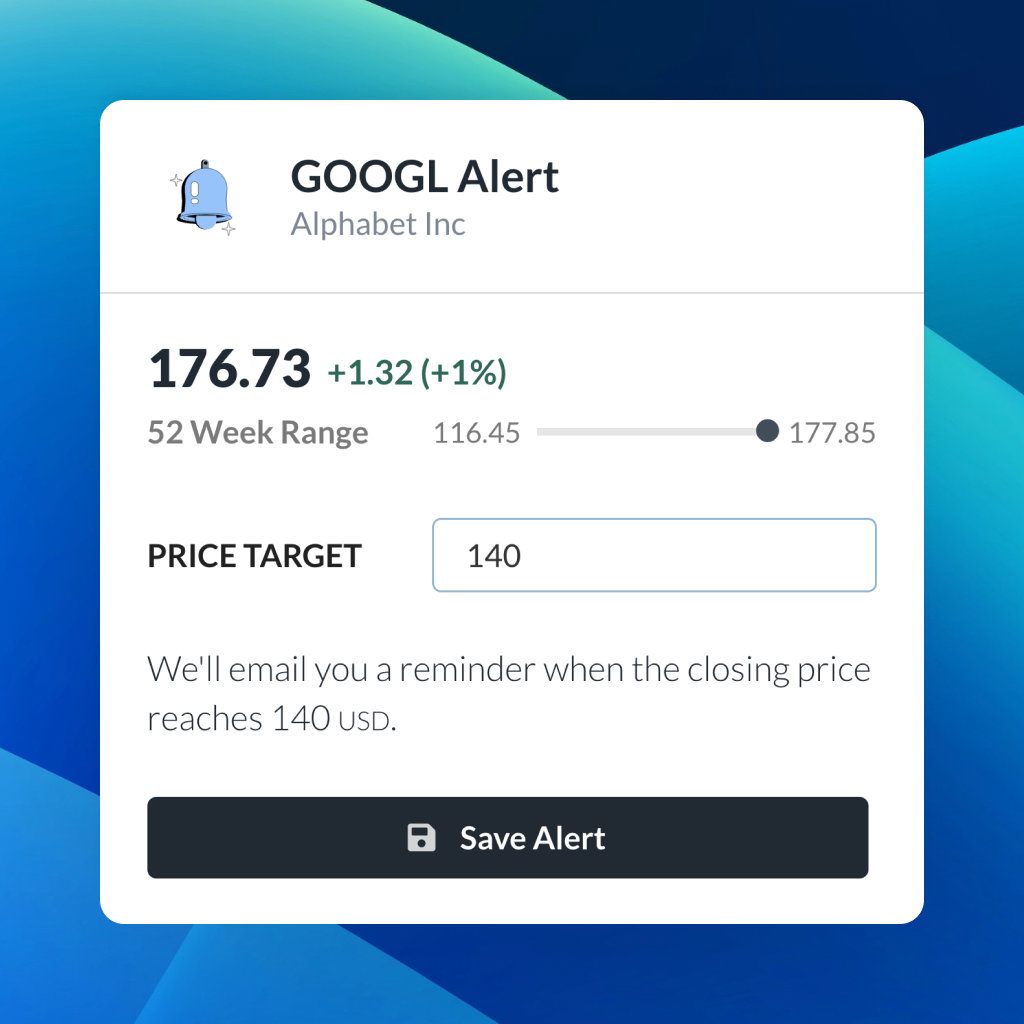
Palantir Technologies Inc
NYSE:PLTR


| US |

|
Johnson & Johnson
NYSE:JNJ
|
Pharmaceuticals
|
| US |

|
Berkshire Hathaway Inc
NYSE:BRK.A
|
Financial Services
|
| US |

|
Bank of America Corp
NYSE:BAC
|
Banking
|
| US |

|
Mastercard Inc
NYSE:MA
|
Technology
|
| US |

|
Abbvie Inc
NYSE:ABBV
|
Biotechnology
|
| US |

|
Pfizer Inc
NYSE:PFE
|
Pharmaceuticals
|
| US |

|
Palantir Technologies Inc
NYSE:PLTR
|
Technology
|
| US |

|
Nike Inc
NYSE:NKE
|
Textiles, Apparel & Luxury Goods
|
| US |

|
Visa Inc
NYSE:V
|
Technology
|
| CN |

|
Alibaba Group Holding Ltd
NYSE:BABA
|
Retail
|
| US |

|
3M Co
NYSE:MMM
|
Industrial Conglomerates
|
| US |

|
JPMorgan Chase & Co
NYSE:JPM
|
Banking
|
| US |

|
Coca-Cola Co
NYSE:KO
|
Beverages
|
| US |

|
Realty Income Corp
NYSE:O
|
Real Estate
|
| US |

|
Walt Disney Co
NYSE:DIS
|
Media
|
| US |

|
PayPal Holdings Inc
NASDAQ:PYPL
|
Technology
|
Utilize notes to systematically review your investment decisions. By reflecting on past outcomes, you can discern effective strategies and identify those that underperformed. This continuous feedback loop enables you to adapt and refine your approach, optimizing for future success.
Each note serves as a learning point, offering insights into your decision-making processes. Over time, you'll accumulate a personalized database of knowledge, enhancing your ability to make informed decisions quickly and effectively.
With a comprehensive record of your investment history at your fingertips, you can compare current opportunities against past experiences. This not only bolsters your confidence but also ensures that each decision is grounded in a well-documented rationale.
Do you really want to delete this note?
This action cannot be undone.

| 52 Week Range |
13.96
28.81
|
| Price Target |
|
We'll email you a reminder when the closing price reaches USD.
Choose the stock you wish to monitor with a price alert.

|
Johnson & Johnson
NYSE:JNJ
|
US |

|
Berkshire Hathaway Inc
NYSE:BRK.A
|
US |

|
Bank of America Corp
NYSE:BAC
|
US |

|
Mastercard Inc
NYSE:MA
|
US |

|
Abbvie Inc
NYSE:ABBV
|
US |

|
Pfizer Inc
NYSE:PFE
|
US |

|
Palantir Technologies Inc
NYSE:PLTR
|
US |

|
Nike Inc
NYSE:NKE
|
US |

|
Visa Inc
NYSE:V
|
US |

|
Alibaba Group Holding Ltd
NYSE:BABA
|
CN |

|
3M Co
NYSE:MMM
|
US |

|
JPMorgan Chase & Co
NYSE:JPM
|
US |

|
Coca-Cola Co
NYSE:KO
|
US |

|
Realty Income Corp
NYSE:O
|
US |

|
Walt Disney Co
NYSE:DIS
|
US |

|
PayPal Holdings Inc
NASDAQ:PYPL
|
US |
This alert will be permanently deleted.
 Palantir Technologies Inc
Palantir Technologies Inc




 You don't have any saved screeners yet
You don't have any saved screeners yet

Good morning. Welcome to Palantier's Third Quarter 2022 Earnings Call. We'll be discussing the results announced in our press release issued prior to the market open and posted on our Investor Relations website.
During the call, we will make statements regarding our business that may be considered forward-looking within applicable securities laws, including statements regarding our third quarter and fiscal 2022 results, management's expectations for our future financial and operational performance and other statements regarding our plans, prospects and expectations.
These statements are not promises or guarantees, and are subject to risks and uncertainties, which could cause them to differ materially from actual results. Information concerning those risks is available in our earnings press release distributed prior to market open today and in our SEC filings. We undertake no obligation to update forward-looking statements, except as required by law.
Further, during the course of today's call, we will refer to certain adjusted financial measures. These non-GAAP financial measures should be considered in addition to, not as a substitute for or in isolation from, GAAP measures. Additional information about these non-GAAP measures, including reconciliation of non-GAAP to comparable GAAP measures is included in our press release and investor presentation provided today. Our press release, investor presentation and SEC filings are available on our Investor Relations website at investors.palantir.com.
Over the course of the call, we will refer to various growth rates when discussing our business. These rates reflect year-over-year comparisons unless otherwise stated.
Joining me on today's call are Alex Karp, Chief Executive Officer; Shyam Sankar, Chief Operating Officer; Dave Glazer, Chief Financial Officer; Ryan Taylor, Chief Business Affairs and Legal Officer; and Kevin Kawasaki, Global Head of Business Development. To begin today's call, we'll open with a few highlights from Foundry Con, where you'll hear from Alex as well as representatives from Jacobs, Tyson Foods, William, Apache, Swiss Re and Space Systems Command.
[Audio/Video Presentation]
I'll now turn the call over to Ryan.
We generated $478 million in revenue this past quarter and $37 million in adjusted free cash flow, marking our eighth consecutive quarter of positive adjusted free cash flow. Despite significant geopolitical and macroeconomic uncertainty, our government business surpassed the $1 billion revenue mark on a trailing 12-month basis, and our U.S. commercial business grew for the ninth quarter in a row, rising 53% year-over-year.
The number of customers using our software, including leading commercial and government enterprises in the U.S. and overseas also increased substantially this past quarter, rising 66% from this time last year. We increased our U.S. commercial customer count to 132 at the end of Q3, a 124% increase year-over-year.
Our expanded footprint within the market is a reflection of our ability to both reach additional customers and grow existing relationships. In particular, we closed 273 deals this past quarter representing an increase of 63% year-over-year. 19 of those deals were at least $10 million in total contract value, 32 were at least 5 million and 78 were at least 1 million.
We have come as far as we have by consistently engaging with some of the hardest problems that the world and our customers have faced since our founding. For example, our work in supply chains, which is increasingly scaling into ecosystems is powered by foundry's data integration capabilities. This year alone, we have started 25 supply chain projects. This includes the expansion of our work in shipbuilding at Hyundai Heavy Industries bringing the partnership to over 45 million and the expansion of our work with the FDA to modernize food supply resilience to preclude shortages like the one we experienced with infant formula earlier this year.
The total value of contracts that we have closed in the third quarter reached 1.3 billion, a new milestone for us, which includes nearly $1 billion of contract awards from the U.S. government alone such as our most recent contract worth up to 229 million with the U.S. Army Research Lab to deliver AI ML capabilities across the DoD. We recognize that our path to growth is not always linear, but with the opportunity that lies ahead, we continue to recruit and retain the top talent at a time when other companies in the technology sector are slashing their plans and cutting workforces.
I'll hand it over to Shyam for further discussion regarding our business and product strategy moving forward.
Thanks, Ryan. We have spent the last 2 decades building our products for the world in which we actually live. The disruption and uncertainty that we're seeing around us from Ukraine, the pandemic and inflation, it's driving customers towards us and to our software.
As the world continues to struggle with concurrent supply chain and energy crises, Palantir customers have been able to use foundry to connect and integrate decision-making within their value chain, from their suppliers to their customers to instantly trade off possible courses of action.
You just saw highlights from 2 flagship events we held in Palo Alto and London for our customers to share their experiences with each other. Customers underscored the significant impact our software is having across industries. Executives at Tyson Foods shared how they generated $200 million of annualized savings in 24 months.
Jacobs Engineering shared how our software has reduced energy consumption by 1/5 at its first wastewater plant running on foundry, with the potential to generate $90 million of annualized savings across their 300 plants. Swiss Re shared that they saved more than $100 million in the first year of use alone. More than 35% of employees at Swiss Re use our software on a regular basis. Our moment of macroeconomic uncertainty, that differentiation has never been more valuable to the market than today.
These customers consistently focus on our ontology is the decisive factor in delivering results quickly. Our strength, particularly in the U.S. commercial market has also received increasing recognition across the industry. Gartner ranked us as a visionary in data integration. IDC ranked Palantir as the #1 AI software platform worldwide by 2021 market share and sales, beating Microsoft, IBM, Amazon and Google. Forrester named Palantir as the leader in artificial intelligence and machine learning platforms. And there is no place where time to kinetic impact is more important than on the battlefield.
In the government sector, Gotham has become the choice for U.S. and allied defense organizations around the world. We have now officially received DoD IL-6 accreditation, a critical milestone for our broader government business, further enabling our SaaS offering on secret networks. And our new Fed start offering builds on Apollo to enable software companies to achieve FedRAMP authorization in record time and at a fraction of the cost.
In addition, we had our TITAN vehicle on display at the annual AUSA conference, where it was met with positive reactions from the U.S. government, partner nations and the industrial base.
From the kill chain to the supply chain, our products ensure that there are no missing links.
I'll turn it over to Dave to take us through the financial results from this quarter.
Our U.S. business continues to be the most significant driver of our growth. U.S. revenue grew 31% year-over-year to 297 million, and on a trailing 12-month basis, U. S. revenue grew to $1.11 billion. Our commercial revenue in the United States grew 53% year-over-year to $88 million, and our core U.S. commercial revenue, which excludes our strategic investment program, grew 47% year-over-year and 7% sequentially.
U.S. government revenue increased 23% year-over-year to $209 million. On customer count, our net new U.S. commercial customers grew 124% year-over-year and 11% quarter-over-quarter, marking 7 consecutive quarters of sequential growth greater than 10%.
Turning to our global top line results. Third quarter total revenue grew 22% year-over-year to $478 million, ahead of our prior guidance even when factoring in an additional $1. 4 million currency headwind since we issued guidance. Overall net dollar retention was 119% remaining constant quarter-over-quarter.
Commercial revenue increased 17% year-over-year to $204 million. Our international commercial business was roughly flat year-over-year and continues to be affected by both macroeconomic conditions and the strengthening dollar. A number of our customers in the United Kingdom, Europe and Asia enter into contracts denominated in U.S. dollars. And as a result, the strong dollar has been a significant headwind for them.
Government revenue increased 26% year-over-year to $274 million. We saw our government business cross another major milestone this quarter as we generated $1.02 billion on a trailing 12-month basis, surpassing the $1 billion mark for the first time. Our customer count continues to increase at a significant rate. We added 33 net new customers in the third quarter, bringing our Q3 2022 customer count to 337, a 66% increase year-over-year and an 11% sequential increase. We added 25 net new commercial customers, which represents 98% growth year-over-year and 12% quarter-over-quarter. Our revenue within our existing customers also continues to expand. Trailing 12-month revenue from our top 20 customers increased 15% year-over-year to $48 million per customer.
Third quarter billings were $509 million, up 47% year-over-year. In the third quarter, total contract value or TCV was 1.3 billion. U.S. TCV booked was $1.1 billion, 90% of which was attributable to our U.S. government business. The third quarter TCV figure was driven significantly by renewals and expansions of existing U.S. government contracts, a portion of which have already been funded to date.
For total remaining deal value, we ended the third quarter with $4.1 billion a 17% increase quarter-over-quarter. The quarter-over-quarter growth in total remaining deal value was driven by our unusually strong performance in TCV.
As I previously mentioned, the TCV of our U.S. government contracts accounts for both funded and unfunded contract value, and we're seeing this pass-through to our total remaining deal value. We saw headwinds to remaining deal value as a result of executing on our previously announced plan to cancel all remaining unfunded strategic investment commitments.
We ended the third quarter with $1.3 billion in remaining performance obligations, up 43% year-over-year. As a reminder, RPO is primarily comprised of our commercial business as it does not take into account contracts with initial term of less than 12 months and contractual obligations that fall beyond termination for convenience clauses, both of which are common in our government business.
Turning to margins and expense. Adjusted gross margin, which excludes stock-based compensation expense, was 80%. Third quarter adjusted expenses were $397 million, up 9% sequentially. The sequential increase was driven primarily by headcount-related expense as we had 450 net headcount additions in the quarter, our largest hiring quarter of the year, and including 141 new graduates who joined in quarter.
Third quarter adjusted income from operations, excluding stock-based compensation and related employer payroll taxes was $81 million, representing adjusted operating margin of 17%, 600 basis points ahead of our prior guidance. Our adjusted operating margin significantly exceeded our guidance as a result of several factors, but primarily driven by cloud and deployment efficiencies representing around $9 million of outperformance, and the elimination of certain discretionary spend across the business, particularly in G&A, representing approximately $14 million of outperformance.
We expect to continue to see efficiencies in the fourth quarter, and we'll remain disciplined in our approach to the discretionary spend in this macroeconomic environment.
Third quarter adjusted earnings per share was $0.01, which includes a negative $0.02 impact driven by losses on marketable securities. We generated $47 million in cash from operations and our adjusted free cash flow was $37 million, representing a margin of 10% and 8%, respectively. This marks our eighth consecutive quarter of positive adjusted free cash flow.
On a trailing 12-month basis, we generated 231 million in adjusted free cash flow and $238 million in cash flow from operations.
We ended the third quarter with $2.4 billion in cash and cash equivalents and no debt. We retain access to additional liquidity of up to $950 million through our $500 million revolving credit facility and $450 million delayed draw term loan facility, both of which remain entirely undrawn. Our balance sheet leaves us well positioned to capitalize on opportunities that may arise in the current macro environment.
Now turning to our outlook, for the full year 2022, despite a negative $6 million currency impact since our prior quarter's guidance, we are reaffirming our revenue guidance of between $1.9 billion and $1.902 billion. Excluding such impact, we would expect full year 2022 revenue of between $1.906 billion and $1.908 billion. We are raising our outlook for adjusted income from operations for the full year. We now expect adjusted income from operations of between $384 million and $386 million.
For the fourth quarter, after factoring in a negative $5 million currency impact since our prior quarter's guidance, we expect revenue of between $503 million and $505 million. Excluding such impact, we would expect fourth quarter revenue of between $508 million and $510 million.
We expect adjusted income from operations of $78 million to $80 million.
With that, I'll turn it over to Ana to start the Q&A.
Thanks, Dave. We'll begin with 2 questions from our shareholders before we open up the call. Our first question comes from Ryan who asks, can you speak about the current competitive landscape and elaborate how Palantir products stand out against the newly launched Microsoft data platform, Salesforce Genie and the Snowflake platform that are attempting to offer an all-in-one solution like foundry?
Tom, do you want to take this?
Sure. Well, thanks, Ryan. The answer is really the ontology. It's why our platforms remain far ahead of the competition. And that's because the ontology, it's the missing link in terms of what you need to realize value from all of these investments. It's the component and the architecture that's required to get data apps to actually deliver value on top of cloud data warehouses or to get AI to scale throughout the enterprise or to turn your digital twin into something that's actionable and operational within the enterprise. And we've spent 15 years investing in a road map that's deep and built upon the ontology, and it continues to be the focus of all the core investments that we're making around product.
We're deepening the capability that we're offering our customers here. And that's happening against the backdrop where the competition has yet to understand what the ontology really is, but they will. And that's really my main conclusion from our foundry con events in Palo Alto and London is that our customers were so clearly articulating the role of the ontology, the value they credited it as really the decisive factor in delivering results quickly. And there are 2 things there that should not be taken for granted results that are quick.
And so that's, I think, a key focus here. You heard from Deutsche Telekom, they talked about how they don't even bother connecting to data sources that won't be modeled in the oncology because they see so much value in a reduced effort and increased outcome for the use cases that they're able to build on top of the ontology. We heard that from Rio Tinto, where they talked about at the Oyu Tolgoi mine in Mongolia, have they actually originally modeled risk in operations. But because they did in ontology for free, they got an opportunity data set that helped them drive increased production, which is obviously the front end of the business there.
In Palo Alto, we heard from Tyson's Food where they were able to use the ontology to quickly go from an initial use case around COVID response to a set of use cases that got to $10 million of value and then quickly to $40 million and then finally to $200 million worth of value.
Just a slightly different augmentation of what Shyam is saying, maybe a different riff that like underscores the success of people using our product is people think these products are easy to build. And by the way -- and this is whether it was PG, Nexus peering, GAIA, or foundry, foundry one, data integration, foundry 2, kind of ontology decisions driven, a lot of people, even at big otherwise successful companies go from PowerPoint to thin technology under the assumption, you can just take ontology, you can spell it slightly differently, you can spell it the same way, and you can impose it on your, honestly, not very strong software offering that was last year's technology with this year's salespeople. And it doesn't work. That's why we are powering the USG. That is why we are powering we're efforts. That's why foundry was used in, let's say, probably 500,000 lives in America.
Mostly people who are from the under class and would have died during COVID. And it's why we need our competition to explain to the world, okay, you need this. But they gravely underestimate the difficulty in doing this. We've been doing this for 15 years. There are thousands of hidden problems that really I don't think any other company understands, whether it's the cold chain, the supply chain. It's like -- and it's wonderful that people are discovering this. It's going to take decades to build this stuff.
Even if you can build it as well as we can. You have to discover the problems. And that's why our clients on the evangelism tour, primarily in the U.S., are galvanizing the market and leading to these results. But the difficulty is just completely underestimated.
Thank you, Shyam and Alex. Our next question comes from Garoff who asks what are Palantir's plans to grow the business in this challenging macro environment.
I mean other people should -- we've been predicting an even more challenging macro environment than this for the last 20 years. I mean how long have we been in the trenches together? 17 years in the trenches. The products are built for a disjointed world, a world where you need horizontal and vertical integration in the military context or actually we have low latency where your systems -- underlying systems actually don't work even though on the PowerPoint, they say they do, where you have to deliver results overnight, where your business totally f-ed and you got to make it work in a quarter. That's what our business is built for.
By the way, that's why we prepared and then that's the technical thing. Why do we have 8 quarters of free cash flow? Do you think it's a coincidence, we were preparing for this. We have -- why do we have $2.4 billion in the bank and no debt? We weren't living in the metasphere. We were living in this world in the way we thought it would be -- and we've been essentially -- you could even look at this as a prep. We're a prepper company. We've been preparing it's like -- 0preppers have their rucksack and a rifle. We have PG, GAIA, Foundry and $2.4 billion in the bank and no debt. That's our company.
Our next question is from Brent with Jefferies.
Dr. Karp on the government business at the beginning of the year, you had a bigger aspiration for deals to come into the pipeline. I think you brought a close assumption down. I'm curious where you see the pipeline of the government transactions for the back half of this year into '23.
It was a little bit -- okay, breaking up, but I think you were saying, well, where do we see the government revenue going. Look, we're positing to the world purely financially. Palantir's had a CAGR of 35% in the USG. It's -- that CAGR is included years, I think, 3 years that were flat. So we tend to have kind of lumpy growth and flatness, which no one likes. You don't like it. We don't like it. We're positing that the future will look more like the traditional baseline of 35% than the baseline of this year of upper 20s. What is the proof of that? Okay, I could tell you how our products are being used on the front line. You can read the news, you can probably surmise that things like
Nexus peering, foundry, GAIA are powering events that you may be reading about. And then there's our massive TCV. It's like, yes, TCV in the USG is just $1 billion. This is massive. There's a legitimate question, when do you capture that in the form of GAAP revenue? That's a legitimate question to which we have no answer. But we will capture it because the contracts have been concluded and because we are sitting on the most important missions in the world, and those missions are going to end up being fully funded, and you see that in our contractual relationships.
Thanks, Alex. Our next question is from Mariana with Bank of America.
So with increased expectations for global recession next year, I understand it's probably too early to discuss specifics about 2023 outlook. But would you mind discussing how you're thinking about the positive and negative catalyst from a global recession or a potential global recession? Because I think -- the way I think about it is it's a positive catalyst for disruption and increased needs for operational efficiencies and for Palantir demand, but also probably lower corporate profits are challenged. So how are you thinking about that?
We disambiguate the world into America, Canada, U.K. and then what has historically been a very large market for us. Europe, driven by Germany. What I think you see happening is that disruption is helping us in the U.S. It's driving results that are outsized in U.S. commercial. Our LTM in the last 12 months is $327 million, roughly, 102% growth. You see the TCV number in USG. You can surmise what that means. So and then the positive side of it is that the integral of U.S. revenue for us is growing at 61%. It used to be 49% 2 years ago. It will be in the 70% range fairly shortly. And so the impact of the disruption is much greater/disruptive negative effect of Europe, especially sluggishness in Europe's motor Germany will impact us less.
However, what I believe and other people should talk about is that we are going to see negative impacts because of strong dollar because of sluggishness to adopt new technologies in Europe that will impact our business. It is impacting our business. If you took those results, the LTM for our U.S. business is still just under 40%. And so if you took out our European market, this would be -- I mean, obviously, results are strong, but they would be flying in like a -- and those are going to impinge us. They're going to continue to impinge us. It's just the amount of impinging is going to be less.
I do think it's particularly dangerous for most people in tech. This environment is not in an environment where flimsy thin, non-valuable essentially, you churn your data and you show our PowerPoint to somebody who barely understands that technology is going to work just because you've got a great steak dinner and white teeth. That's not going to work. And Americans still expect a lot more than that, both in government and in commercial. Now the rest of the world may not expect more than that. And that's a problem for the rest of the world long term and a problem for us in the near term. But yes, we see this as a huge opportunity also both because other people will fail and will succeed.
I don't know what look, disruption has always been a huge opportunity for us. I think that's exactly right. And those geographies are where we're focused.
Our next question is from Gabriela with Goldman Sachs.
We appreciate the case studies at foundry con about the tens of millions of savings that some of your customers are realizing. So 2 questions on my end. One is, how are you thinking about evolving the pricing model towards a value-based pricing give us an update on how you're thinking about capturing the upside from value-based pricing while also giving your customers flexibility with their initial price points? And then the second question is for deployed engineering model, how is that evolving as you start low commercial value customers on the ACV side? Does that essentially shift your mix away from the forward deployed engineering model over time?
Yes. So on the pricing side, I mean, value-based pricing is where we started. That's kind of our jam, so to speak. And I think what we've had to evolve over time is pricing models like usage-based pricing that enable enterprise customers to start on smaller use cases, nibble into it, kind of figure out where it's going to fit in their enterprise come experientially to realize the power that the oncology unlocks and then scale that across their operations.
And you can kind of see that playing out in the case studies where Tyson starts with COVID response and then scale at S&OP plus, plus, plus. Like from a small use case to the breadth of the enterprise here, and that's been very helpful for us. And then we have customers who kind of migrate models from usage-based to large enterprise contracts as they go. And I think really for us, it's been showing the flexibility to meet the customer where they're at.
In terms of our forward deployed engineering models, like our -- I really think about that as much more in terms of R&D from our shoes. Like how many people are spending time at the coal phase asking the hard question of is my software working? And I don't mean does it work as in like, is there an room, is there a bug, I mean like, does it effing matter to this institution? And in this time of immense macroeconomic challenge, like am I saving the institution? Am I doing anything that's going to move the needle, or is my little churning the data, just moving deck tiers on the Titanic. And those are the people who actually have that sensibility. And they're the ones that come up with the idea of what are we going to build next? What can we do now? How do we inflect the product road map so it matters?
And so we're always going to modulate how we deploy those folks between USG things that are happening in Europe, things that are happening at the front lines of our customers' operations. The engineers are looking and seeing what we're doing on -- in large-scale mining operations in Mongolia as it relates to driving our R&D road map forward.
Alex, we had a lot of individual investors on the line who submitted questions. Is there anything you'd like to say before we end the call?
You know, we built this company for really tough times. The times are tough and they're going to get worse. We feel that Palantir, we know Palantier shines whether it's in the anti-terror context, the war context, the COVID context, or the U. S. commercial context when times are bad.
This is a long-term play. We are watching our products and how they're absorbed in the market. And I really appreciate your support. Our individual investors mean a lot to us and to me. And we are planning to continue to go into battle every day. We are living in this world, not in some meta fake world that you may enjoy until you wake up and you are poorer, your brain works less well and you hate your neighbor.
We are the size and depth and quality of our revenues matter to us and to you. We believe we are making the West a stronger and better country. We see in America an ability to adapt like no other country, to be open to people who present things in the ways that look [expletive] crazy, and if they work, they don't really care and they give you an ability to buy in. We celebrate that. We are enormously proud of our work defending the West, especially the U.S. military and its allies.
I wish I could tell you more about what we're doing and how much it's transforming the world to be a better place. How much it scares our adversaries. What we deliver scares our adversaries; how much we were underestimated by our adversaries because of the informational technology and products we built over decades. The quality of the people we have here, the pain we go through to deliver and our commitment to win.
Thank you, Alex. That concludes today's call.